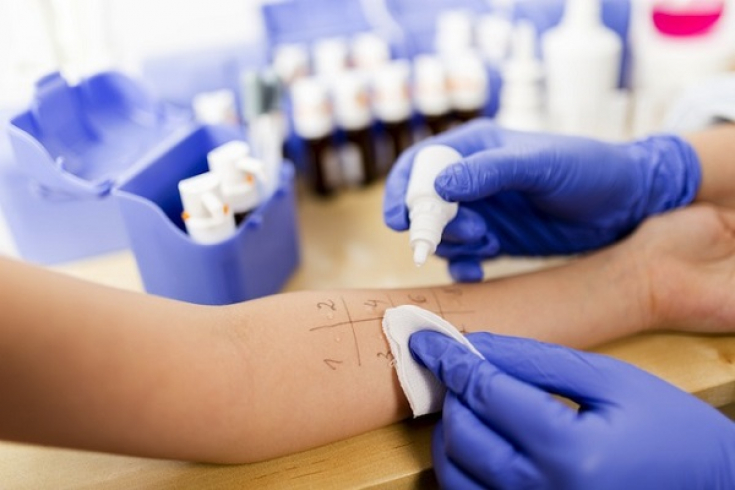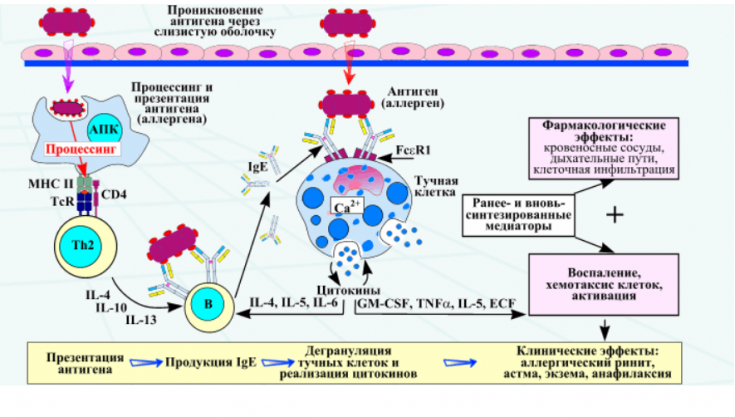In recent years, latex allergy has been widely discussed, which, in terms of growth and population coverage in all countries, is equated to an epidemic. Latex allergens (LAH) have become one of the leading environmental factors capable of inducing immunoglobulin E (IgE) mediated hypersensitivity reactions in the skin, eyes, upper and lower respiratory tract.
A group at increased risk of developing latex allergy includes medical personnel who use latex gloves and medical supplies made from latex. Statistical data state that hypersensitivity to latex suffers from 1 to 6% of people in developed countries, medical personnel – more often than the rest of the population.
Read this article about the triggers and main symptoms of a latex allergy, as well as the diagnosis and first aid for an anaphylactic reaction to latex.
The pathogenesis of latex allergy: where the danger lies
Latex allergy – immediate (type I) hypersensitivity reaction to rubber tree proteins. Latex is found in many consumer products and medical materials: rubber bands, medical gloves, inhalation masks and catheters, rubber cuffs, radiological balloons, various dental materials, pressure gauge bulbs, condoms, and more.

According to epidemiological data, most cases of latex allergy occur among the medical staff of medical and diagnostic institutions (1.5-10.3%), dental offices (2.5-20%), patients of surgical, gynecological and urological departments (0 .8–9.1%), as well as children with spina bifida.
Latex allergens can enter the human body through the skin, mucous membranes or parenterally – both contact and aerosol. When using latex gloves, allergens can be leached out of rubber by moisturizing the skin of the hands, followed by adsorption to the lubricant.
When gloves are removed, turned inside out and shaken, adsorbed latex allergens are released into the air and inhaled to cause sensitization or trigger symptoms in previously sensitized individuals. In the 2000s, the frequency of latex allergy decreased among medical professionals, along with the advent of powder-free gloves and the decrease in the protein content of latex gloves.
Follow us on Instagram
Clinical manifestations of latex allergy: 4 hypersensitivity reactions
Allergy to latex can manifest itself in many ways, from harmless dermatitis to anaphylaxis.
There are four types of hypersensitivity reactions to latex:
1. irritative dermatitis – it is a contact dermatitis resulting from skin irritation (non-immune reaction). This reaction can be triggered by latex and other chemicals added to the product during the manufacturing process. As a rule, cancer occurs on the hands or other part of the body after contact with the allergen;
2. Allergic contact dermatitis (an eczema-like disease) is a delayed-type reaction that usually appears on the hands and develops several hours after contact with latex. The reason for such a reaction may be sensitization not only with latex, but also with biologically active additives present in rubber;
3. Contact urticaria is the most typical form of latex allergy and is an allergic reaction characterized by flushing, swelling, itching or blistering. A reaction occurs within 5-25 minutes after contact with the allergen;
4. systemic allergic reactions can either be caused by aerogenic intake of PAH, or be the result of a general sensitization of the body. A wide range of symptoms is possible: from local itching of the skin to Quincke's edema and attacks of bronchial asthma (BA).
The most formidable complication of latex allergy is anaphylaxis, in which there is a decrease in blood pressure, severe itching, hoarseness, shortness of breath, laryngo- and bronchospasm, abdominal pain, feelings of anxiety and fear, swelling, nausea and loss of consciousness.
Allergic or sensitive: differentiating skin reactions
Diagnosis and treatment of latex allergy: first aid for anaphylaxis
“The gold standard” for diagnosing latex allergy are three main methods of examination: questionnaire screening, skin allergy testing with PAH (prick-test), determination of specific IgE in blood serum to latex enzyme immunoassay or radioallergosorbent method.
After being diagnosed with latex allergy, close contact with this material must be completely avoided. Persons suffering from food cross-reactions should also avoid contact with latex. Today there is an alternative to latex gloves – these are vinyl or nitrile materials.

Therapeutic measures for latex allergy are aimed at relieving its symptoms and normalizing the patient's condition. They include:
- stop contact with latex;
- hypoallergenic diet;
- drug effect, the nature of which depends on the severity of the condition and the nature of clinical manifestations (antihistamines, enterosorbents, corticosteroids).
If anaphylaxis develops after contact with a latex product, immediate interventionby administering epinephrine 0.1% IV or IM 0.5 ml is required, repeated after 5 minutes if necessary. Increasing respiratory failure & nbsp; should be terminated by intubation or if the previous – conicotomy.
It is also necessary to carry out infusion therapy with crystalloid solutions (starting with 250-500 ml and gradually increasing the dose together with colloidal solutions). Secondary therapy includes corticosteroids (prednisolone 90-120 mg IV) and antihistamines (diphenhydramine 20-50 mg IV or IM). Additionally, bronchodilators can be used if bronchospasm is not stopped by other methods (salbutamol 2.5-5.0 mg).
Thank you for staying with estet-portal.com. Read also other interesting articles in the "Dermatology" section: Specific immunotherapy allows you to forget about atopic dermatitis







Add a comment